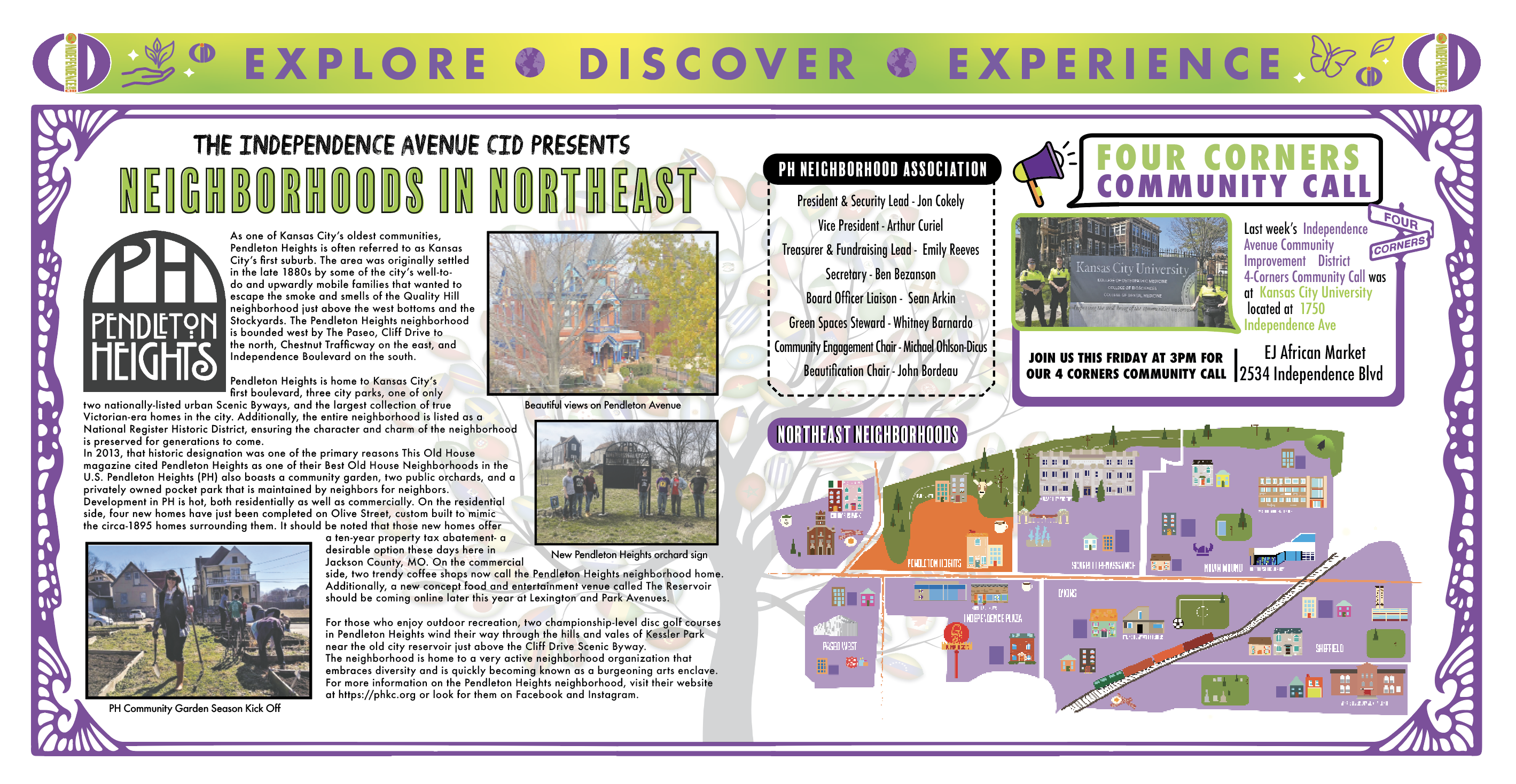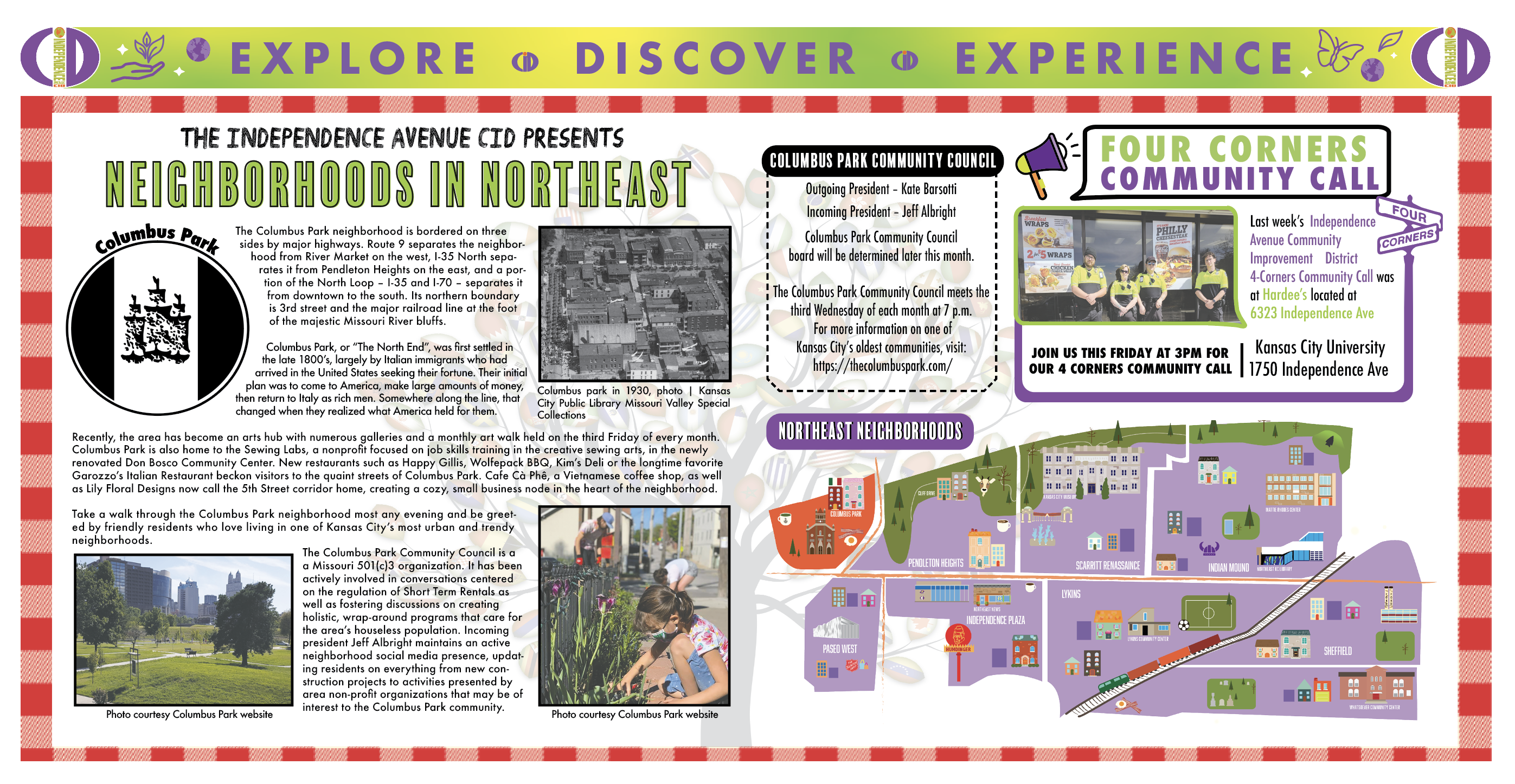By Leslie Collins
Northeast News
January 4, 2012
Events in Historic Northeast ran the gamete in 2011 ranging from the foot patrol project to approval of the Northeast Community Improvement District (CID) Revolving Loan Fund to the crippling fire at the former Vista Theatre on Independence Boulevard.
Northeast Kansas City Chamber of Commerce President Bobbi Baker Hughes reflected on 2011 and shared her hopes for 2012.
“I’m proud that we’ve been able to be a part of so many businesses, their start-ups, their ribbon cuttings, the celebrations of other businesses that have been here and that are celebrating the fact that they’re still here and doing business in Northeast,” Baker Hughes said. “I’m really excited to see that many of the residents in Northeast are starting to patronize some of these businesses and are buying local.”
As Baker Hughes reminisced about 2011, one event that topped her list was the fire at 2609 Independence Blvd. Formerly the Vista Theatre, the building housed several retail businesses and apartments.
“It was definitely a defining moment in the history of Northeast,” she said. “When the fire happened it was a devastation to not only the people that live here, but the people that used to live here and the businesses that used to be here. It held a lot of memories for a lot of people.
“The Villa Capri restaurant and the theatre that were there were not only historic in nature, but history was made there; deals were dealt there that defined this community.”
While the fire wiped out a piece of history, Northeast found new beginnings through the city’s newly established CID/Neighborhood Improvement District (NID) Revolving Loan Fund. For years, the Chamber and other community leaders discussed establishing a CID, but the one thing that held them back was start-up funding, Baker Hughes said.
“The CID Revolving Loan Fund was the instrument that allowed us to move forward,” she said. “We talked about it for 20 years and now we have a chance to really do it if we can keep the neighborhood, businesses and property owners on board and keep showing them how it’s working in other parts of the city and other parts of the country.”
Northeast Chamber received a $40,000 loan from the city to establish a CID along Independence Boulevard. A CID generates revenue through a self-imposed tax to fund community driven plans like improving economic development, safety, beautification and others. To establish the CID, 51 percent of the property owners and 51 percent of the assessed value ownership of the properties within the CID boundaries must approve adopting a property tax levy. In addition, residents within the proposed CID boundaries must approve the additional sales tax.
“We are well on our way to the 51 percent that we need,” Baker Hughes said.
To date, approximately 25 percent of the property owners have pledged their support, she said.
Property owners have already identified several goals for the CID, which include addressing the “crime and grime” issues first and then addressing the marketing, branding and economic development of Northeast, she said. Working to establish a CID for Northeast is her No. 1 goal, she said.
Big 5 Initiative
When the Greater Kansas City Chamber of Commerce rolled out its Big 5 Initiative in 2011, Northeast stakeholders latched on to No. 2: the Urban Core Neighborhood Initiative, which aims to improve a select area on Kansas City’s east side. Greater KC Chamber partnered with United Way to implement the initiative and are expected to announce the chosen geographical area this month.
Seven stakeholders in Northeast partnered together and sent in their letter of intent outlining their vision for creating the “community corner concept.” Regardless of the Greater KC Chamber’s decision, the stakeholders will continue with their plan, Baker Hughes said.
Stakeholders include the Northeast Chamber, Don Bosco Centers, Communities Creating Opportunity (CCO), Newhouse, Westside Housing, Northeast HELP (Health, Education, Labor and Public Safety) Center and Mattie Rhodes.
The goal is to create community corners at key intersections like St. John and Hardesty, Independence Avenue and Benton Boulevard, and Independence Avenue and Prospect.
“We need to make those into vibrant neighborhood market places again,” Baker Hughes said. “It gives the neighborhoods a place to go – meeting places to communicate with our neighbors.”
The plan strives to create a cohesive, interconnected community where one knows his or her neighbors.
Asked how the group plans to promote these community corners, Baker Hughes said it begins with the businesses.
“We need to start by communicating with the business owners on these corners and see what is they want to achieve there,” she said. “Then, we can help them with a marketing strategy and interlace that with what the Chamber wants to do.
“As these small community corners start to connect, then the next thing you know, you have St. John and Hardesty connecting with Independence Avenue and Indiana. When you start connecting the dots and building strength from those different corners, then you have a foundation to continue to build from.”
It’s all about strength in numbers, she said, and sharing each other’s strengths and weaknesses.
“What you don’t have, I can help you with and what I don’t have, you can help me with,” she explained. “It’s family. Community should be family and support one another. As we do that as a community, we become stronger all the way around.”


















